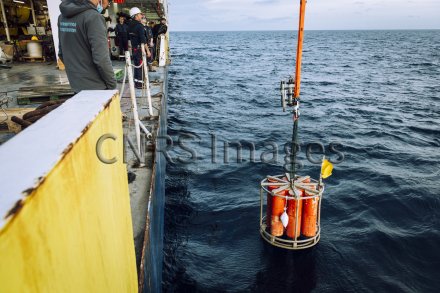Research program(s)
Production year
2022

© Cyril FRESILLON / MIO / CNRS Images
20220020_0071
Mise à l’eau de la BioCam depuis le navire océanographique Pourquoi pas ? Grâce à ses deux caméras intelligentes, cet appareil est capable d’observer la bioluminescence émise par les organismes marins et de les reconstruire en trois dimensions. Il est installé sur le site de l’observatoire sous-marin EMSO-LO, à 2 500 m de profondeur au large de Toulon, avec plusieurs autres dispositifs : un sismographe, un spectromètre gamma, le BathyReef (un récif artificiel bio-inspiré) et le rover sous-marin benthique BathyBot. En associant les données de la BioCam avec celles de la caméra hypersensible de BathyBot, elle aussi capable d’observer la bioluminescence, les scientifiques espèrent pouvoir identifier les microorganismes bioluminescents. La BioCam est développée par l'Institut de physique des deux infinis (IP2I) de Lyon et la Division technique de l'INSU du CNRS.
The use of media visible on the CNRS Images Platform can be granted on request. Any reproduction or representation is forbidden without prior authorization from CNRS Images (except for resources under Creative Commons license).
No modification of an image may be made without the prior consent of CNRS Images.
No use of an image for advertising purposes or distribution to a third party may be made without the prior agreement of CNRS Images.
For more information, please consult our general conditions
2022
Our work is guided by the way scientists question the world around them and we translate their research into images to help people to understand the world better and to awaken their curiosity and wonderment.